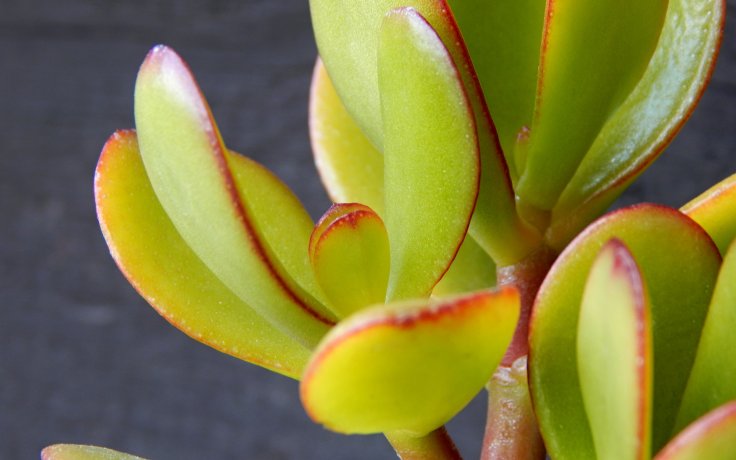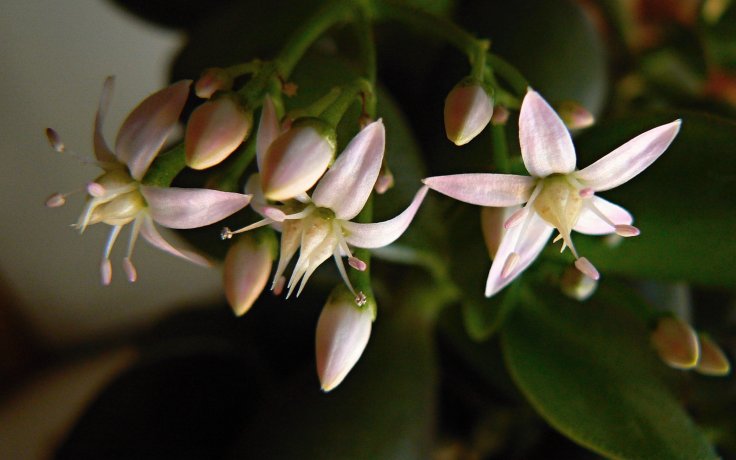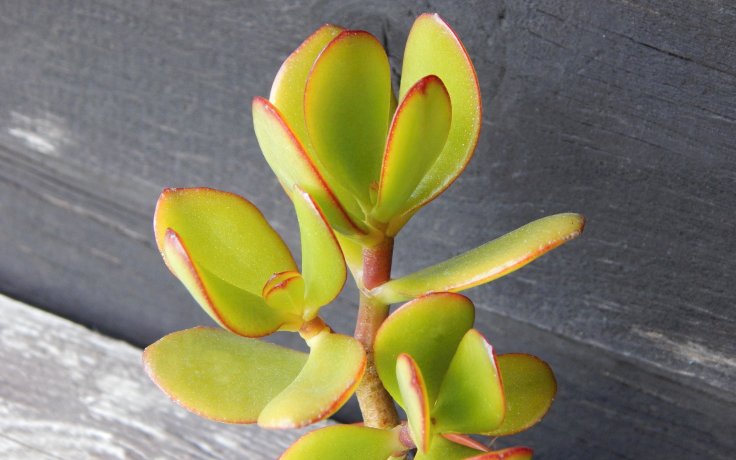- Home
- Succulents
- Crassula
- Crassula ovata





Crassula ovata
A sunny habitat or partial shade is ideal for the plant.
Always water a few days after the substrate has dried out. In winter, limit watering. The plant is not water demanding.
In the short term, it can tolerate a light frost of around -1.1 °C. However, the plant is not hardy.
This is the most common and typical succulent of our grandmothers. This absolute classic should not be missing from any succulent collection.
Crassula ovata, formerly known as Crassula portulacea. Also known as the Jade plant, it is a succulent native to the rocky slopes from Willowmore in the Eastern Cape to KwaZulu-Natal. The epithet "ovata", refers to the characteristic ovoid shape of the plant's leaves.
This plant has rounded, glossy green leaves. The margins are often edged in red. In full sun, the leaves may take on a yellow tint. The plant forms a sturdy trunk and can develop into a shrub or tree, reaching up to 2.5 metres in height. However, it does not normally reach this size in this region.
The star-shaped flowers of the 'Fat Egg' turn white or pink and appear in compact, rounded terminal racemes. It usually flowers from mid-winter to early spring.
This plant can reach enormous proportions if given enough space and water. It can be shaped by pruning, allowing you to customize its crown to your liking. This typical succulent is characterised by its high resistance to various growing pitfalls and is familiar to almost everyone who is interested in succulents. Although there are many species of columbines (Crassula), this is probably the best known and most widely used of them. It is one of the most unpretentious plants. As an absolutely typical succulent, this piece should be a staple in any collection.